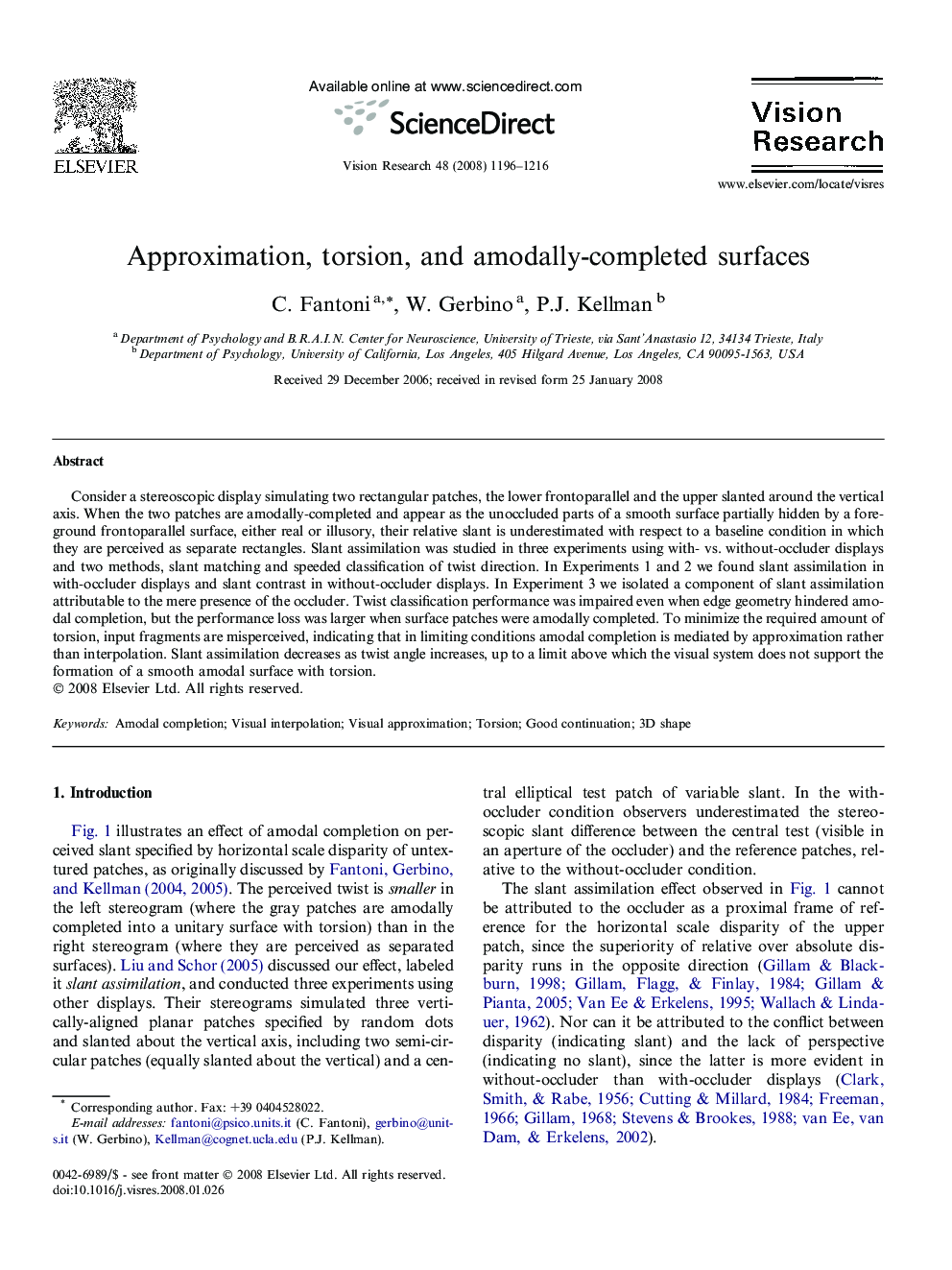| Article ID | Journal | Published Year | Pages | File Type |
|---|---|---|---|---|
| 4035238 | Vision Research | 2008 | 21 Pages |
Consider a stereoscopic display simulating two rectangular patches, the lower frontoparallel and the upper slanted around the vertical axis. When the two patches are amodally completed and appear as the unoccluded parts of a smooth surface partially hidden by a foreground frontoparallel surface, either real or illusory, their relative slant is underestimated with respect to a baseline condition in which they are perceived as separate rectangles. Slant assimilation was studied in three experiments using with- vs. without-occluder displays and two methods, slant matching and speeded classification of twist direction. In Experiments 1 and 2 we found slant assimilation in with-occluder displays and slant contrast in without-occluder displays. In Experiment 3 we isolated a component of slant assimilation attributable to the mere presence of the occluder. Twist classification performance was impaired even when edge geometry hindered amodal completion, but the performance loss was larger when surface patches were amodally completed. To minimize the required amount of torsion, input fragments are misperceived, indicating that in limiting conditions amodal completion is mediated by approximation rather than interpolation. Slant assimilation decreases as twist angle increases, up to a limit above which the visual system does not support the formation of a smooth amodal surface with torsion.
